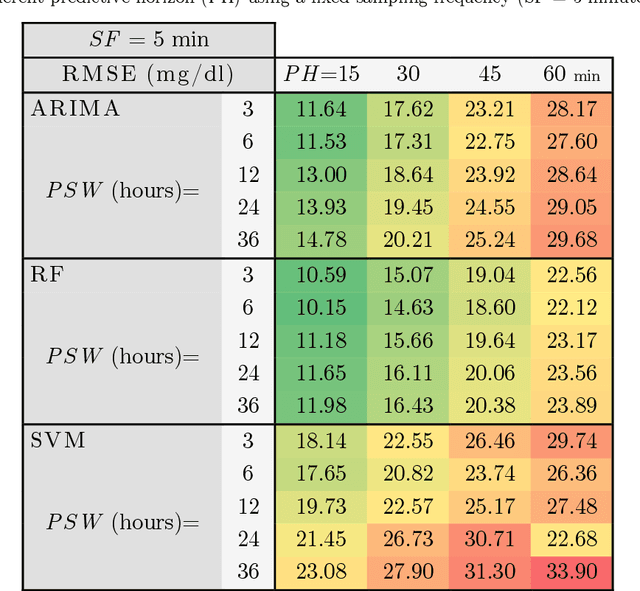Forecasting blood sugar levels in Diabetes with univariate algorithms
Paper and Code
Jan 21, 2021


AI procedures joined with wearable gadgets can convey exact transient blood glucose level forecast models. Also, such models can learn customized glucose-insulin elements dependent on the sensor information gathered by observing a few parts of the physiological condition and every day movement of a person. Up to this point, the predominant methodology for creating information driven forecast models was to gather "however much information as could be expected" to help doctors and patients ideally change treatment. The goal of this work was to examine the base information assortment, volume, and speed needed to accomplish exact individual driven diminutive term expectation models. We built up a progression of these models utilizing distinctive AI time arrangement guaging strategies that are appropriate for execution inside a wearable processor. We completed a broad aloof patient checking concentrate in genuine conditions to fabricate a strong informational collection. The examination included a subset of type-1 diabetic subjects wearing a glimmer glucose checking framework. We directed a relative quantitative assessment of the presentation of the created information driven expectation models and comparing AI methods. Our outcomes show that precise momentary forecast can be accomplished by just checking interstitial glucose information over a brief timeframe and utilizing a low examining recurrence. The models created can anticipate glucose levels inside a 15-minute skyline with a normal mistake as low as 15.43 mg/dL utilizing just 24 memorable qualities gathered inside a time of 6 hours, and by expanding the inspecting recurrence to incorporate 72 qualities, the normal blunder is limited to 10.15 mg/dL. Our forecast models are reasonable for execution inside a wearable gadget, requiring the base equipment necessities while simultaneously accomplishing high expectation precision.
 Add to Chrome
Add to Chrome Add to Firefox
Add to Firefox Add to Edge
Add to Edge